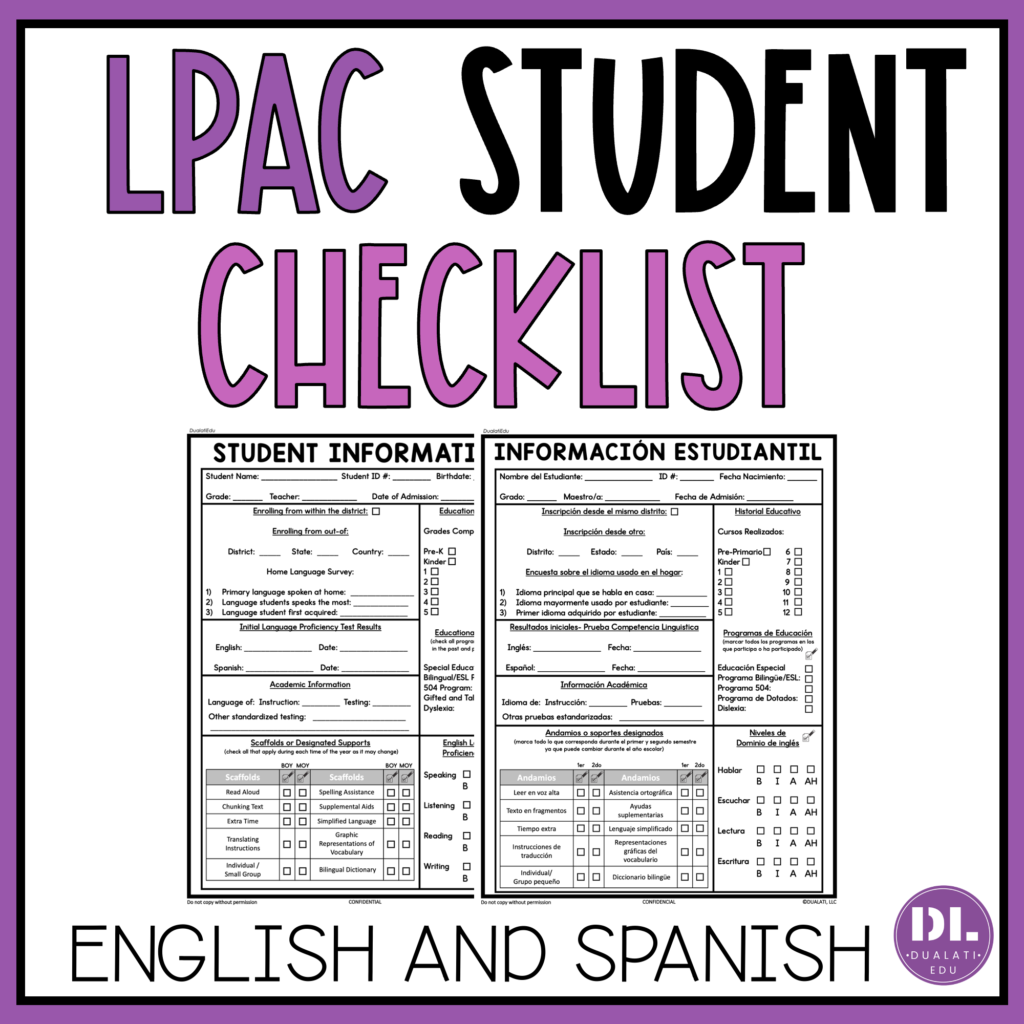What is LPAC?
LPAC stands for Language Assessment Proficiency Committee. As a bilingual or ESL teacher, you will participate in meetings that address the needs of English learners in your classroom.
Let me provide you with a brief overview of the LPAC committee’s goals and responsibilities.
The committee ensures that English language learners (ELL) or emerging bilingual (EB) students receive services according to the Bilingual Education Act of 1968.
Who are the LPAC members?
- Campus Administrator – LPAC Chair
- Certified Bilingual and ESL teacher
- Parent Representative from the school
- Special Education Teacher (when needed)
All members of the LPAC MUST be present in each meeting.
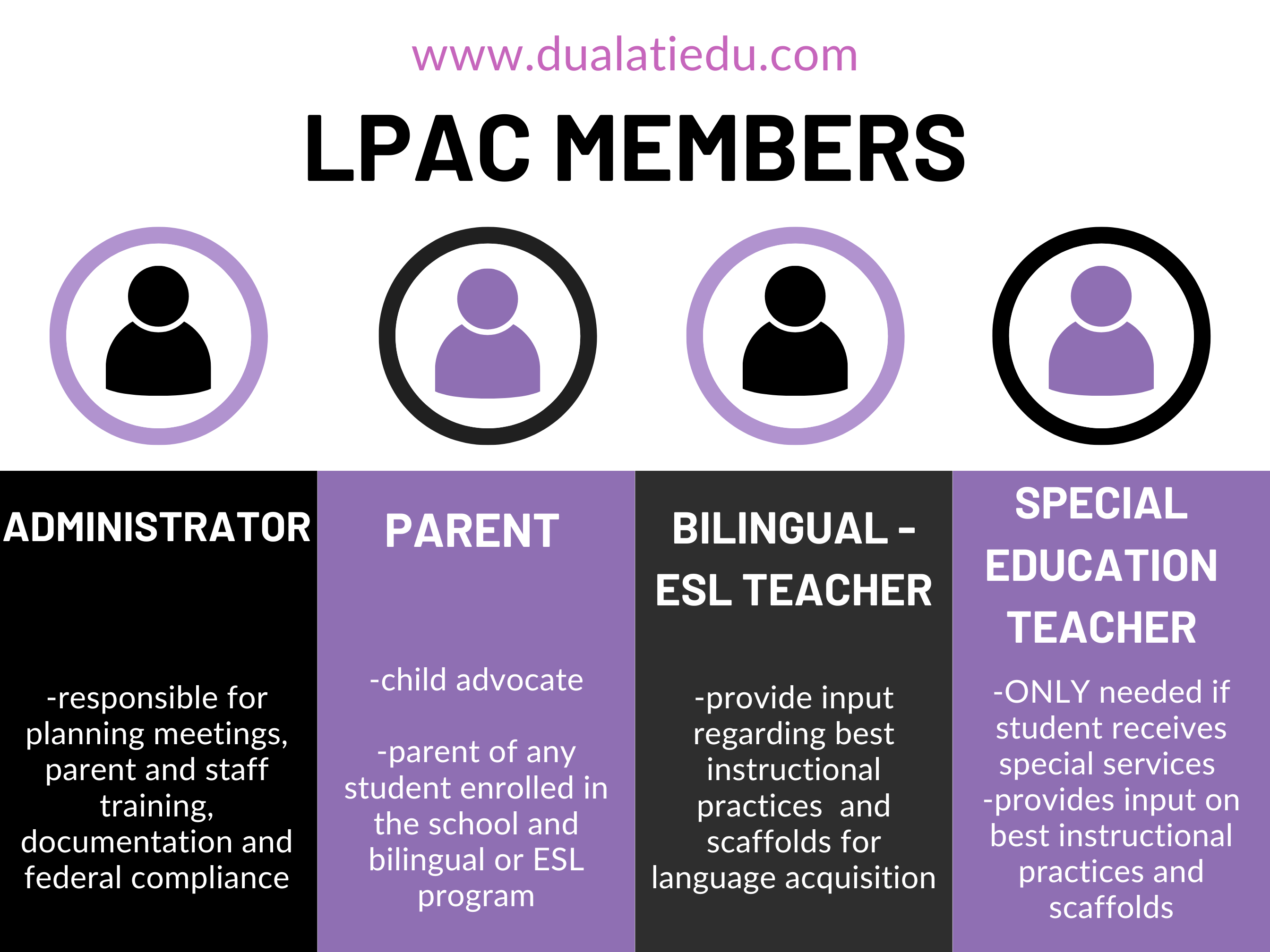
Throughout the school year, the LPAC assumes various roles.
Role # 1 – Identification and Placement
The first role of the LPAC is to identify students who are learning the English language and may require additional support to access academic instruction.
EL identification is a multi-step process.
HOME LANGUAGE SURVEY
Step 1: Schools utilize a survey tool called the Home Language Survey (HLS). The U.S. Department of Education Office for Civil Rights (OCR) and the U.S. Department of Justice (DOJ) provide guidance and have formulated three primary questions to use in an identification tool.
These are:

Keep in mind that:
- families need to understand its intended purpose
- it is available in the native language of the student or a qualified interpreter be provided
- administering staff must be trained
- results should be interpreted and shared promptly with the appropriate school staff.
ENGLISH PROFICIENCY ASSESSMENT
Step 2: Next, if any of the three questions in the Home Language Survey have an answer other than English, then potential English Learners (ELs) are assessed with a valid and reliable language proficiency tool to ensure if they are ELs as determined by the criteria established by the state. These assessments are grade-level appropriate and are called placement/ screener tests. They encompass the four domains of language: speaking, listening, reading and writing.
Here are some examples of screeners/assessments:
- Pre-LAS for K-1st graders
- LAS LINKS for 2-12th graders
- IDEA Proficiency Test
- Woodcock-Muñoz Language Survey III
INITIAL LPAC MEETING
Step 3: Results of the HLS and testing tool will be presented in an initial LPAC meeting to identify students as an English Learners and recommend placement of the student in an appropriate program. The LPAC sends home parent notification letter of the recommendation. The committee may also decide if the student doesn’t meet the criteria to be identified as an EL.
PROGRAM PLACEMENT
Step 4: Placement in a bilingual or ESL program:
Parents receive a Parent Notification Letter stating that the student is identified as an English Learner and provides recommendations for placement in either a bilingual or ESL program. Parents can approve or deny participation in any program offered. The LPAC Chair has the responsibility to answer any parent questions. Any parent decision (acceptance or rejection) must be documented and filed.
Finally, it is necessary to finish the initial identification and placement processes within four weeks of enrollment.
Goal # 2: English Learner Services
Next, let’s focus on the services provided to students throughout their educational journey.
Services are grouped as:
- Programs
School districts must provide either a bilingual or ESL program. The student’s parent must approve placement in any program or can deny participation.

Bilingual programs:
- Transitional – Bilingual education programs aim to help English learners become proficient in English by developing their literacy and academic skills in both their primary language and English. As the students make progress, their grasp of the English language improves. The ultimate objective is to transition to a fully English language curriculum outside of the bilingual program.
- Early-exit programs – move students to all-English instruction within two or years
- Late-exit programs – move students to all-English instruction by 5th or 6th grade
- Dual Language- The goal is to provide instruction in English and student’s primary language (Spanish, Vietnamese, Chinese, German) to develop fully biliterate students.
- One-way dual language programs – students whose first language is not English learn English and their first language
- Two-way dual language programs – the focus is to teach those who are learning English and those who are learning the EL’s first language (not English) in the same classroom
ESL programs
These aim to provide English language instruction using second language acquisition methods, not the student’s primary language. To ensure comprehension, ESL teachers use techniques like visual aids, simplified language, and pre-teaching vocabulary.
a) ESL Content-Based – students receive instruction (reading, writing, mathematics, science, and social studies) in English from an ESL-certified grade level/content area teacher
b) ESL Pull-Out – students receive instruction in English reading and writing in a separate classroom or group within the classroom
2. Certified Personnel
School districts must provide students with certified bilingual instruction and ESL teachers to work with students in these programs as well as continued professional development opportunities.
3. Linguistic Scaffolding or Designated Supports
The LPAC and teacher of record must identify and provide linguistic scaffolds that makes input comprehensible and enhances access to Tier 1 or whole group instruction.
The type and amount of scaffolds provided should be tailored to each student’s needs and explicitly taught how to use them. In addition, it’s important to keep track of their usage and effectiveness throughout the school year and make sure to document it.
These scaffolds or designated supports can include:

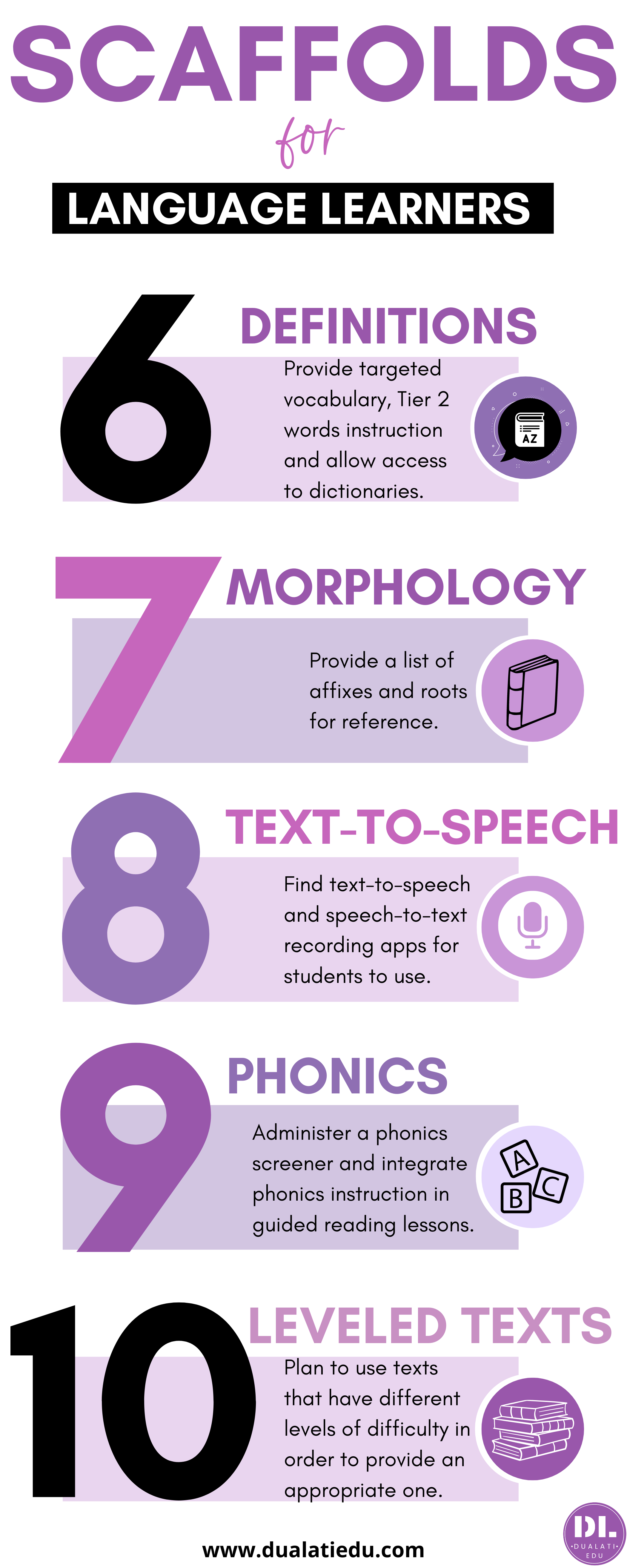
The effective and consistent use of these strategies make these available for students during standardized testing. Therefore, their use during the school year is documented to provide to the LPAC during a review meeting.
Goal #3: Progress Monitoring and State Assessments
Another goal for a successful LPAC is to monitor the services described above.
Teachers discuss the effectiveness of the provided scaffolds or designated supports and make necessary adjustments. These adjustments are recorded and kept in the student’s records.
Teachers collaborate with LPAC to determine the use of scaffolds specific to reading, writing, math, science, and social studies, as well as standardized, district-wide and English language acquisition evaluations.
Lastly, along with scaffolds or designated supports for standardized tests, the LPAC will decide the appropriate state assessment options, including language (if the assessment is available in another different than English).
Goal #4: Review, Reclassification and Monitoring
The LPAC assesses the student’s progress and determine if they meet the program’s exit criteria (which vary by program and state) once they complete the state’s standardized tests and yearly English language proficiency assessments.
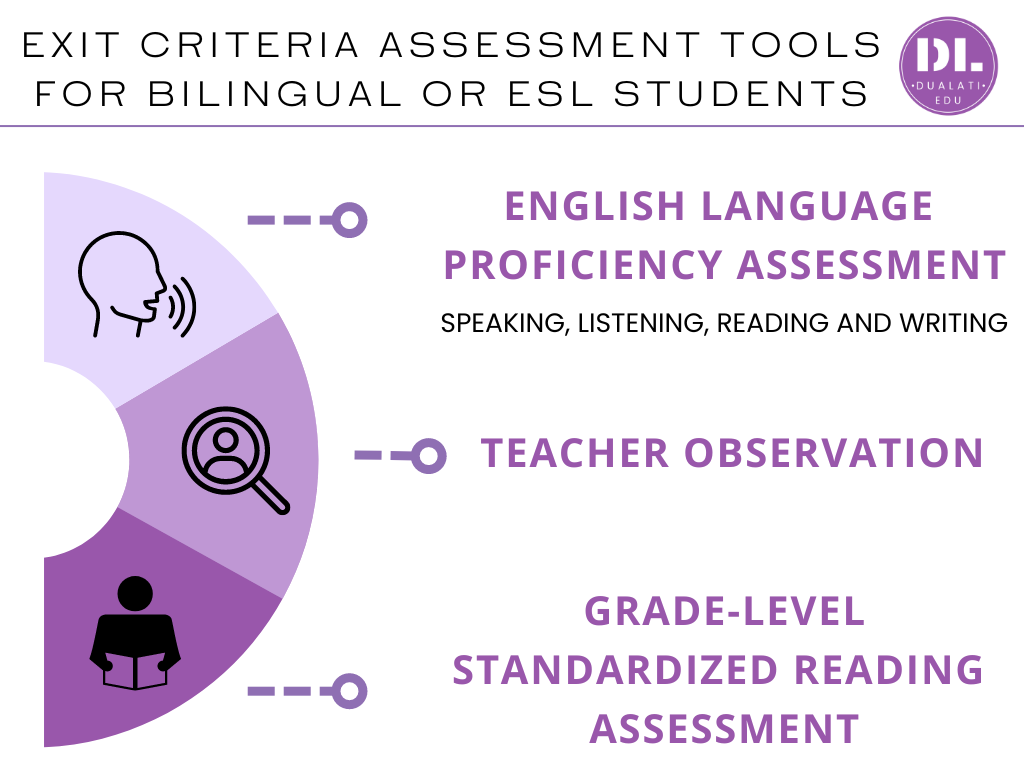
The committee can recommend that the student continue to be identified as an English language learner or be reclassified as a student who is English proficient.
The parent must receive notification of the LPAC decision annually.
If a student is classified as proficient in English, the LPAC will still monitor their progress for two years.
Goal #5 Ensure participation of English language learners in other programs
It is the responsibility of the LPAC to make sure that ELs are allowed to take part in other school programs for which they are eligible, including special education, dyslexia, 504, and gifted and talented programs.
Again, there must be a representative of the LPAC in any Admission, Review or Dismissal meeting in the special education program.
LPAC participation focuses on providing a holistic view of how the current level of English acquisition of the student may impact student academic progress and what scaffolds have been used and proven effective.
To summarize, look at this quick visual.
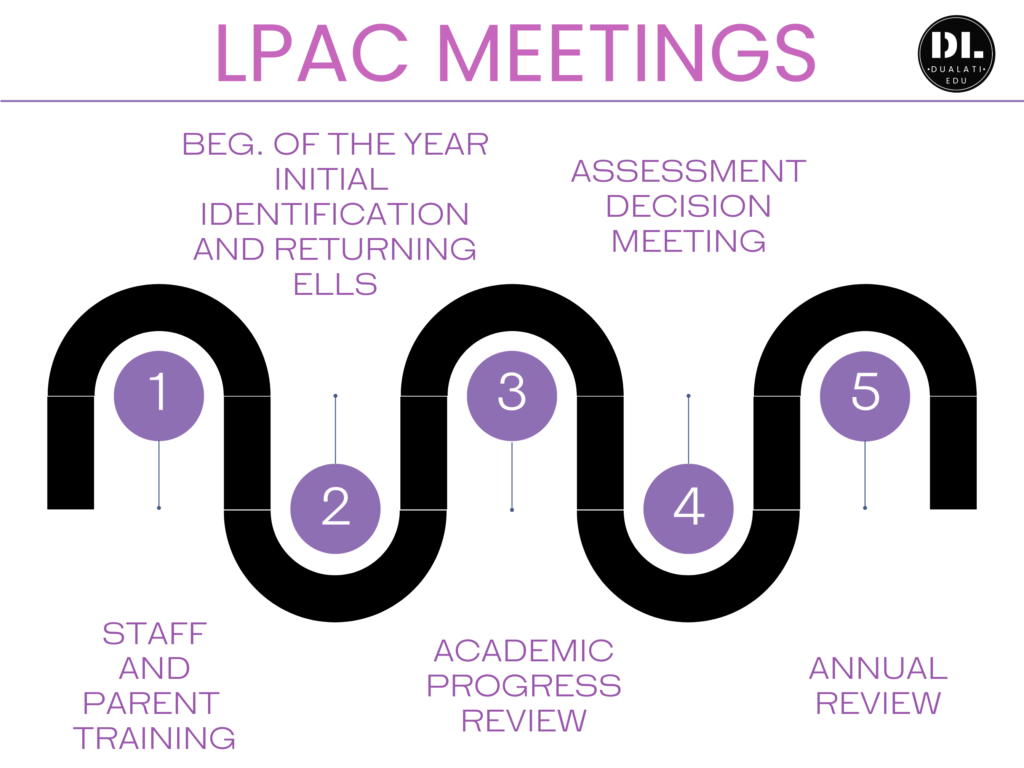
Now, what can you do as a bilingual/ESL teacher to comply with federal guidelines and effectively prepare for the different LPAC meetings?
First, make sure you have updated information from your student roster. The LPAC chair or LPAC clerk can help you clarify any doubts which students participate in a certain program.
Next, have a documentation tool that easily sorts information. These include: type of program, number of years in the program, past year’s language proficiency levels, current recommendations for linguistic accommodations and participation in other programs and any other info related to the student’s language skills.
Finally, I leave you with a FREE tool for you to keep track of student data. Use it to effectively participate in LPAC meetings. Enjoy!


